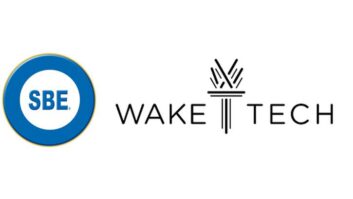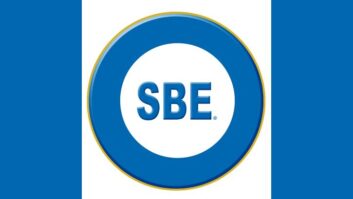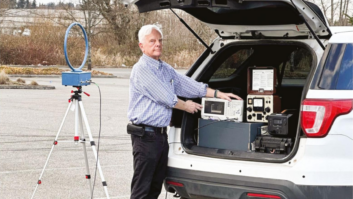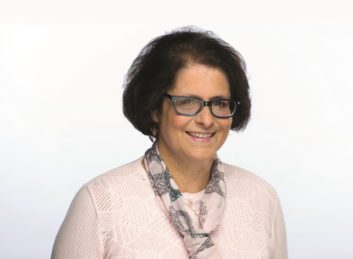 This month Andrea Cummis will be sworn in as president of the Society of Broadcast Engineers. She will be the first woman to hold that office.
This month Andrea Cummis will be sworn in as president of the Society of Broadcast Engineers. She will be the first woman to hold that office.
Cummis, CBT, CTO, has been chief technical officer of PBS39 WLVT(TV), in Bethlehem, Pa., since 2017, and she is a member of SBE Chapter 15 in New York City. Her responsibilities include technical oversight at NPR affiliate WLVR(FM).
She was unopposed in the SBE election and will take office on Oct. 18, succeeding Wayne Pecena, who served two terms and remains on the board as immediate past president.
Cummis has a breadth of expertise, holding degrees in electrical engineering and in law and technology, as well as an MBA. She has worked for more than two decades in engineering, operations and new technology in television, radio and new media.
She and her husband Renard Fiscus also own AC Video Solutions, a systems design and integration firm. Its customers include Christian Faith Network, New Jersey Performing Arts Center, All Mobile Video, M&T Bank, and Raritan Valley Community College.
Cummis spoke with Radio World Editor in Chief Paul McLane.
Radio World: You’ve done quite a bit of systems integration and design, as I understand it.
Andrea Cummis: Lots and lots. Many, many years.
RW: How did you get into broadcast engineering in the first place?
Cummis: Oh, it’s a funny story. I was in my eighth-grade history class and we were doing projects; you got up and showed your project.
Someone dropped off a cart of equipment — a camera and an old black-and-white reel-to-reel deck — but none of it was put together, it was all just on a cart in a box. I thought it was really interesting. I went over and put it together and started recording the projects.
I went over to the librarian and said, “Do you need help with this?” And I became the AV person for the junior high.
I would record all the school plays and do the audio recordings for concerts.
When I was ready to go to high school, the librarian called them and said, “Don’t mess around, just let her do video stuff when she gets there, don’t make her wait.” So I started running a four-camera video studio as soon as I got to high school. I was TD’ing and directing four-camera shoots for the school plays and running monitors backstage. I just figured it all out.
RW: A lot of people in our business would know what that high school AV closet looks like! Yet in 2021 there are still very few women in the field. Why do you think that is?
Cummis: It’s really hard, and pretty physical, and you don’t get paid that much.
If you’re studying engineering in college, why wouldn’t you do chemical engineering or IT, where you don’t have to be on your feet all day and work crazy hours and be on call weekends and nights and probably get paid a lot more?
I think we as engineers are very undervalued in how hard we work and how much knowledge we need, how we have to work under pressure and respond really quickly.
It’s a very unusual job. I wish I knew why more women didn’t do it. I don’t think they have the opportunity. Maybe a lot of people don’t know that this job exists, they were never exposed to it.
RW: As you come in as SBE president, what are your priorities?
Cummis: Well, for me as the first woman president of SBE, I would like to figure out how to diversify and get more women, more minorities, different ages, and people who aren’t necessarily “straight engineering” but have other technical jobs in broadcasting. I think it’s been our goal as a society for a long time, but it feels really important right now.
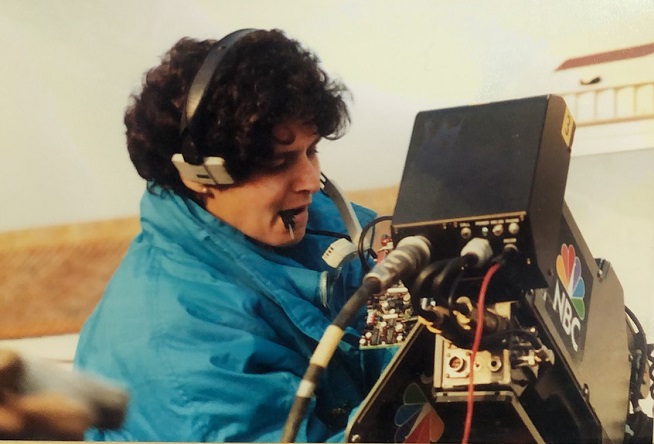
RW: Certainly there’s been no lack of good intentions on the part of the society over the years, but these also are issues in our broader culture. Those are not small obstacles.
Cummis: No, absolutely.
One of our goals is to have a strategic planning process that will open things. In the past, we’ve flown people into one place, trapped them in a room and talked all day. But with all the virtual meetings we have nowadays, it’s a great opportunity to be able to invite more people and do sessions in different jobs and locations — really open it up so that we can get a better understanding of what people need, what they think we could do to be better and attract other kinds of people.
RW: You certainly are coming into this position at an interesting time nationally, given the pandemic and the effect it’s had on events, meetings and working remotely.
Cummis: We’ve done really well at SBE with having virtual meetings, it’s been very successful for us.
For me, the interesting thing being in charge of a facility is having to deal with all the COVID stuff and keeping your facility safe and your people safe. A lot of chief engineers and other members have been thrown into being COVID experts and having to figure this out.
Are your people working remotely successfully? Are you increasing your cleaning?
For example I found these really cool wraps that you put around handles that are supposed to keep everything clean magically. I don’t know how they work but it’s amazing technology. I even had to take COVID certifications including a session with a doctor, a nurse and a lawyer; you had to pass a test.
There’s so much to know and it changes so fast. It really has changed what our job is in ways you never could have predicted.
RW: We often hear of the traditional divide between IT and broadcast engineering. Many of those skillsets and interest areas now overlap. Is the divide getting any closer?
Cummis: In some cases it’s totally merged and there is really no divide; and in other places that are union shops, they can’t get together because they’re not allowed to. That’s where it gets messy, because the broadcast engineers have a specific domain, the IT guys are on the other side, and there are times they have to work together. But then there’s times where you get finger-pointing: Who’s in charge of this or that, and who’s assigning IP addresses or anything else that crosses over.
I think you’re always going to have two paths.
RW: As you look across media technology, are there particular areas where you think SBE members ought to be paying closer attention for their careers?
Cummis: Well, the ATSC 3.0 stuff is coming up really fast. A lot of places are already starting to implement it. There’s so much to know and it’s so complicated, so many ways to use it. Each organization is going to have to figure out why they’re doing it and what they’re hoping to get out of it.
Then having to keep the ATSC 1 going while you’re doing ATSC 3. It’s years and years that you have to overlap, and nobody’s helping you pay for it. How do you do it? How do you “lighthouse”? Are you doing it with somebody else or can you do it with just what you own?
Just taking a webinar is not going to be enough for anyone. There’s an awful lot to know, and it’s going to keep changing. It will be probably be a few years of people watching to see how’s somebody else rolling it out, and was it successful? How long did it take? What did it cost?
We’re looking at it here at WLVT, but we’re part of a big channel share. It’s going to be hard to do that with nine channels on our one piece of bandwidth now; how would you ever lighthouse that?
RW: You mentioned webinars. SBE has done a great job of putting together comprehensive training materials on many radio and TV technical topics. Are there other issues that you want to mention?
Cummis: I think overall we’ve made some really good decisions in the past few years. Our new membership enhancement, SBE MemberPlus, which includes all the webinars, has been really successful. All our education certification, all our big initiatives like the Technical Professional Training Program have been terrific and are continuing — we just started ATSC 3.0 certification, something I should probably take at some point!
There are a lot of things we do really well. I hope to continue those and grow in other places.
[Related: Read our 2014 interview with Wayne Pecena on the occasion of his receiving the Radio World Excellence in Engineering Award.]
SBE Presidents List
Andrea Cummis 2021–
Wayne Pecena 2019–2021
Jim Leifer 2017–2019
Jerry Massey 2015–2017
Joe Snelson 2013–2015
Ralph Hogan 2011–2013
Vincent Lopez 2009–2011
Barry Thomas 2007–2009
Christopher H. Scherer 2005–2007
Raymond C. Benedict 2003–2005
Troy D. Pennington 2001–2003
James “Andy” Butler 1999–2001
Edward J. Miller 1997–1999
Terrence M. Baun 1995–1997
Charles W. Kelly Jr. 1993–1995
Richard Farquhar 1991–1993
Bradley Dick 1989–1991
Jack McKain 1987–1989
Richard Rudman 1985–1987
Roger Johnson 1984–1985
Doyle Thompson, Sr. 1983–1984
Ron Arendall 1981–1983
Robert Jones 1979–1981
James Hurley 1978–1979
Robert Wehrman 1977–1978
Glen Lahman 1975–1977
James Wulliman 1973–1975
Robert Flanders 1971–1973
Lewis Wetzel 1970–1971
Al Chismark 1968–1970
Charles Hallinan 1966–1968
John Battison, P.E. 1965–1966

